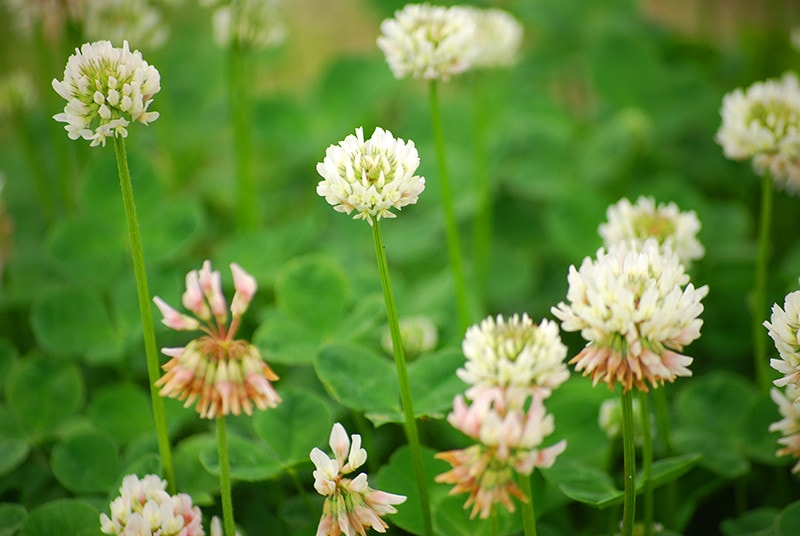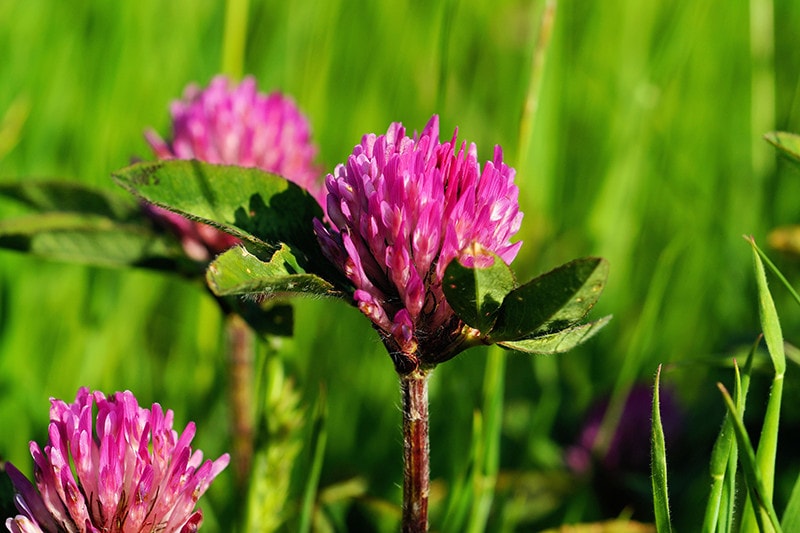Is Clover Good for Your Lawn? (Benefits & Disadvantages)
-
Pete Ortiz
- Last updated:
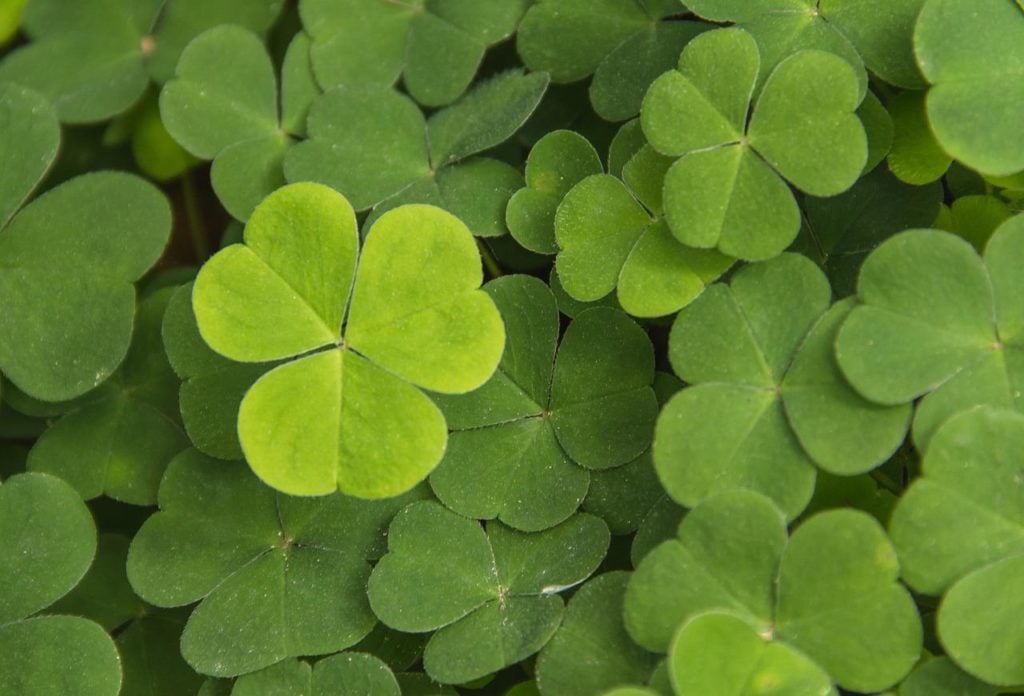
Humans have known about the usefulness of clover plants since prehistoric times. There are many long-held traditions of using clovers as a medicinal and cleansing herb. Even today, clovers are used for various applications.
In this article, we will highlight the various benefits of planting clovers in your yard. We will also discuss some of the drawbacks associated with clovers growing in your yard. Read on to learn more.
What Is a Clover?
Clover, also known as Trifolium, is a common genus of a plant that is widespread throughout the US. It is essentially a ground-covering plant popular for its pollinator-friendly flowers and shamrock-shaped leaves. It may be native to the Mediterranean, but it spread to America in the 1600s, quickly becoming a favorite among farmers. It was used as a cover crop and for livestock forage.
The plant then became a popular lawn plant until it was vilified as a weed. In fact, the market is replete with pesticides and products designed to get rid of this aromatic plant.
Despite the negative reputation, clovers now grow worldwide with over 300 known species. In the US, clusters of the plant can be found in cooler regions in the Northwest, Northeast, and Midwest. This plant is also very adaptable and can survive in almost any climatic conditions. This is why clovers make good cover crops.
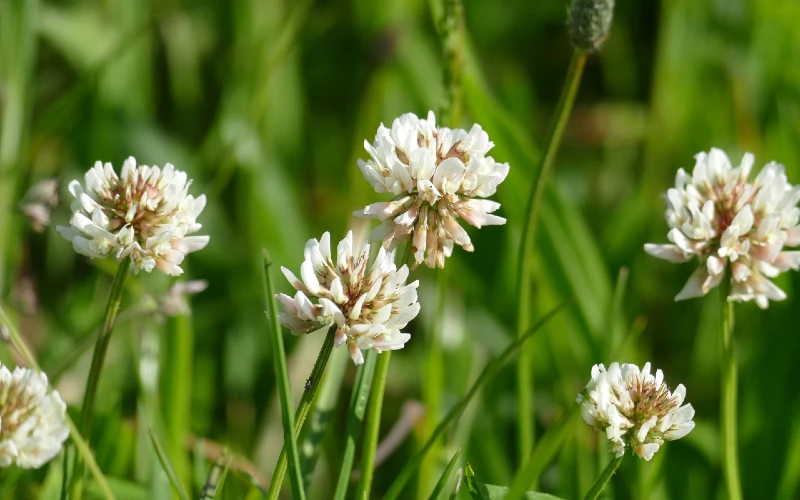
Benefits of Growing Clovers on Your Lawn
1. Weed Suppression
Usually, when people notice the presence of clovers in their garden, their first reaction is to get rid of the plant. The reason for this is simply because, as a hardy plant, clovers thrive in poor soil and do not require a lot of water. Once the roots of the plant are established in your garden, they can spread rapidly, choking out other plants. Yet, if you want to create an affordable, sustainable, and non-toxic home garden, you can leverage these clover characteristics.
The ability of clover plants to not only survive in poor growing conditions makes them a wonderful companion plant for other flowers in your yard. Clovers will grow and take up the space that would have otherwise been occupied by garden weeds. Their roots quickly establish themselves, suppressing weeds¹ in the immediate environment.
These plants are better than other allelopathic weeds like crabgrass when growing in your lawn because they have a symbiotic relationship with the soil. They do not just take but also help improve the soil conditions.
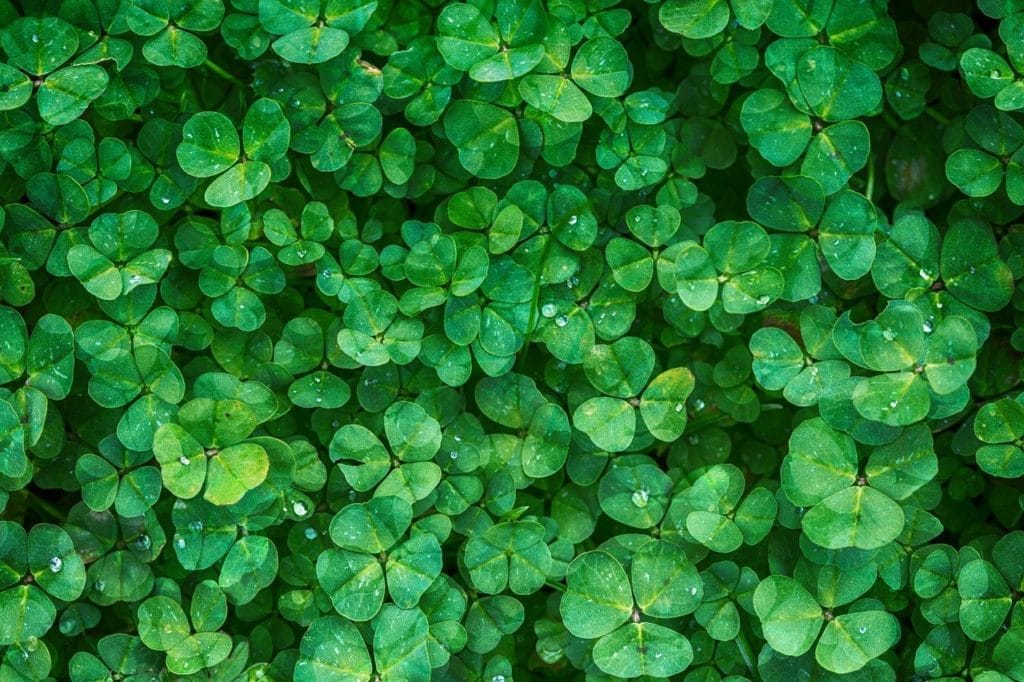
2. Naturally Nitrify Your Garden
As mentioned above, clovers help improve the soil. They are members of the legume family. Legumes are among the few plant varieties with the ability to absorb nitrogen from the atmosphere and add it to the soil in a process known as nitrogen fixation¹. Nitrogen is an essential nutrient for healthy plant growth. This is perhaps why it is one of the main components of commercially sold fertilizers.
If you reside in an area that has been stripped of its nitrogen or the soil is not nitrogen-rich, you may have to introduce it into your soil. Traditionally, adding compost or store-bought fertilizer does this. However, you can also replenish the nitrogen supply in the soil by planting nitrogen fixers like clovers.
However, there is a caveat. For you to get maximum nitrogen production from clovers, the plant has to be tilled under the soil. Tilling should be done before seed production and when the clover has full flowers.
Ideally, you should use perennial clovers if having a healthy lawn is your objective. You can regularly mow the clovers as you mow your lawn, and as the root systems die off, they will release a small amount of their nitrogen into the soil.
3. Attracts Bees and Other Beneficial Insects
If you want to have a garden teeming with all kinds of animal and plant life, you should provide a balanced ecosystem. There are various native plant species that you can plant in your yard to attract beneficial insects like butterflies and bees.
Unfortunately, most of them are usually too expensive. If you purchase such a plant locally, it would cost you a minimum of $10. Shipping the plants will set you back $25. If you opt to purchase plant seeds, sprout, and plant them, time may not be on your side.
Fortunately, you can use clovers to improve the biodiversity of your yard. You can simply buy clover seeds for about $5, scatter them in your yard and let them establish themselves with little to no care. The clovers will rapidly grow and bloom to produce flowers that attract pest-eating insects, bees, butterflies, and birds to your garden.
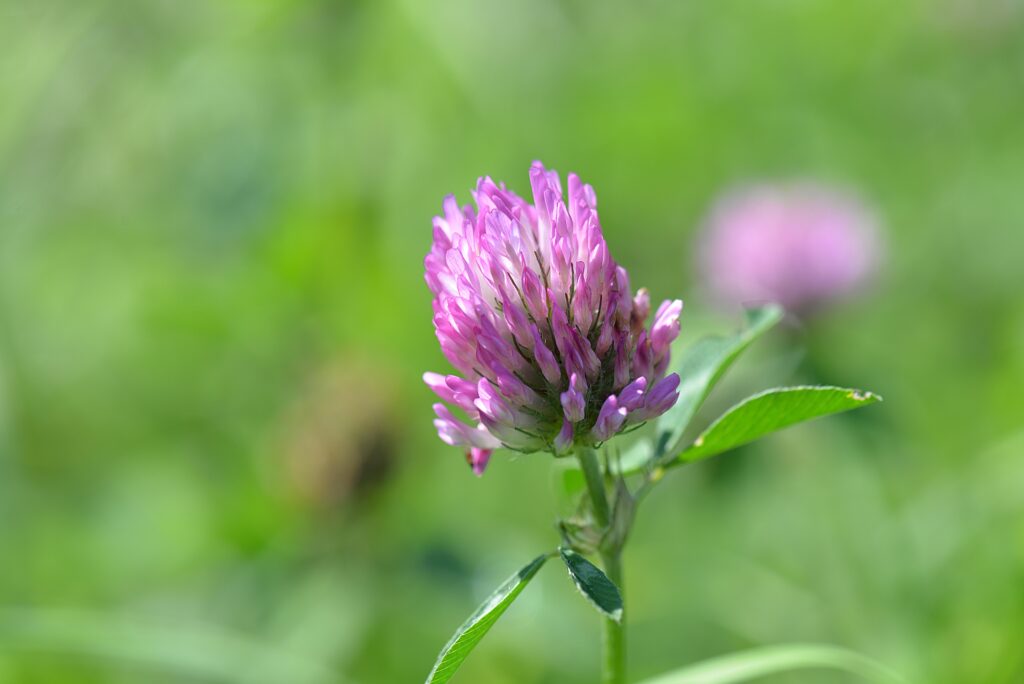
4. Contributes to a Healthy Lawn
The gardening world is rife with debates where people advocate for or are against planting a lawn for sustainability. However, clovers can help bridge the gap between no-lawn and pro-lawn factions.
Initially, clover seeds were added into grass seed mixes before commercial gardening conglomerates started their campaigns against planting clovers in the yard. Not only can the plant help add nitrogen to the soil, but its roots also spread deep into the soil, thus reducing the need to aerate your lawn.
Clovers also improve the biodiversity of your lawn by making it resistant to pests and fungi. This balances the ecosystem and boosts the general health of your lawn. Planting clovers in your lawn will also help reduce the amount of potentially toxic and costly lawn applications that you may rely on to keep your lawn in perfect condition.
5. Can Be Used as Living Mulch
Clovers also make great mulch that you can use to cover other plants growing in your lawn. As mulch, clovers act like reservoirs to soak up water from the soil and store it for plants to use later instead of letting it run off.
It also efficiently reduces evaporation, preventing wilting in your garden plants. Clover mulch has a cooling effect on the soil by reducing roots and topsoil’s exposure to direct sunlight and heat. The mulch is especially useful for gardeners who live in drier areas where municipal water sources are limited and rain is rare.
Unfortunately, clover mulch needs frequent replenishing to be effective and can be costly when covering large areas. However, you can sow clover seeds around your vegetables, fruit trees, and flowerbeds to create a living mulch. The mulch will replenish itself and does not need more water than the amount you are already using for your lawn.
Clovers can be left to their own devices and can grow to heights of up to 24”. You can opt to cut the plant shorter for the added benefit of nitrogen fixation. Using clovers as a living mulch also eliminates the huge number of plastic bags used to pack store-bought mulch.
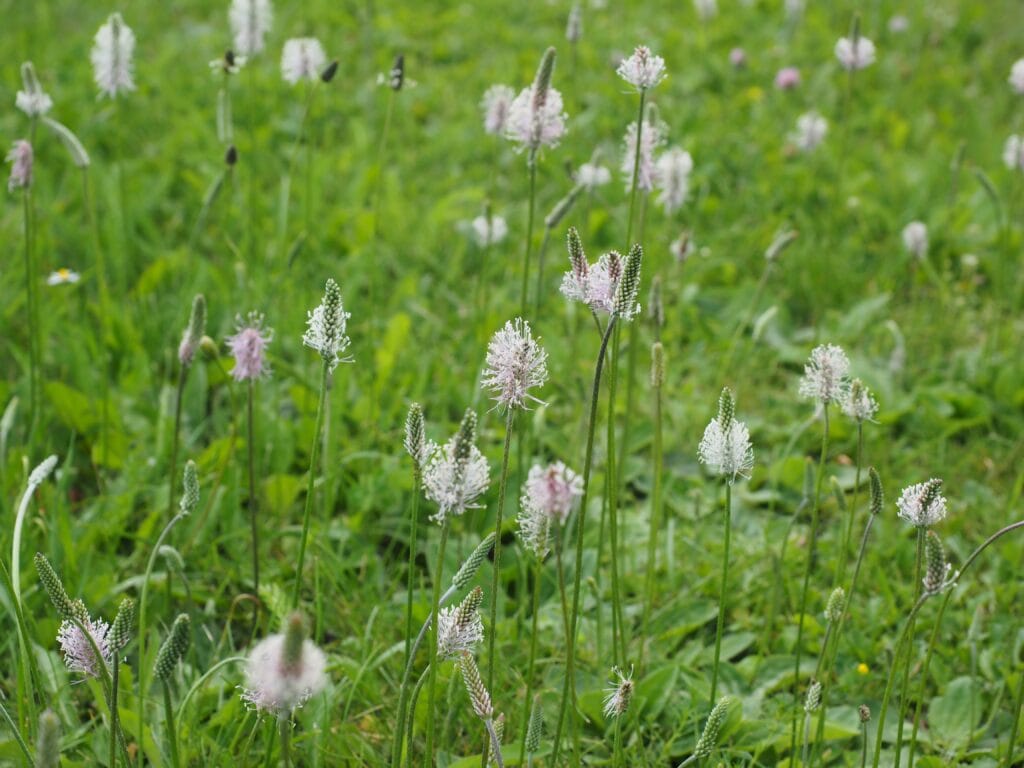
Disadvantages of Growing Clovers on Your Lawn
Granted, planting clover in your lawn can have many useful benefits¹. But are the benefits enough to justify planting the plant on your lawn? For many people, yes, the benefits may outweigh the drawbacks but to others, clovers are still annoying weeds and, as such, should be rooted out of your lawn. Here are some of the drawbacks associated with planting clovers on your lawn.
Poor Durability
Clovers may not be the ideal plant to have on your lawn, especially if you have pets and children. These plants are not as tough as turf grass and may not be able to withstand heavy traffic, unless when paired with grass. Clover’s durability is actually the main problem that gardeners cite when it comes to growing it on one’s lawn.

Appearance
Let’s face it; we all want to grow plant species that improve the aesthetic appeal of our yards. However, you may not like the appearance of clovers when growing on your lawn. It may look uneven, patchy, and weedy, especially when paired with grasses. If you prefer a neat lawn, you may want to look at other plant species that blend with the grass in your lawn.
Invasiveness
Clover’s invasive nature is one of the reasons it is considered a weed by most gardeners. These plants spread out their runners, or stolons, across the soil’s surface to sprout new plants. These invasive plants can creep into vegetable patches, flowerbeds, or even a neighbor’s yard. They are likely to end up choking out other plant species in their path as they compete for water, space, and nutrients.
If the soil in your yard is sandy and your grass is not thriving, allowing clovers to grow freely in your lawn may not be a good idea. These plants have such a dense root system that they can weaken your grass if it is not strong enough. As clovers produce seeds, they will quickly take over your lawn, and before you know it, you will only have a few weak grass shoots left in your lawn.
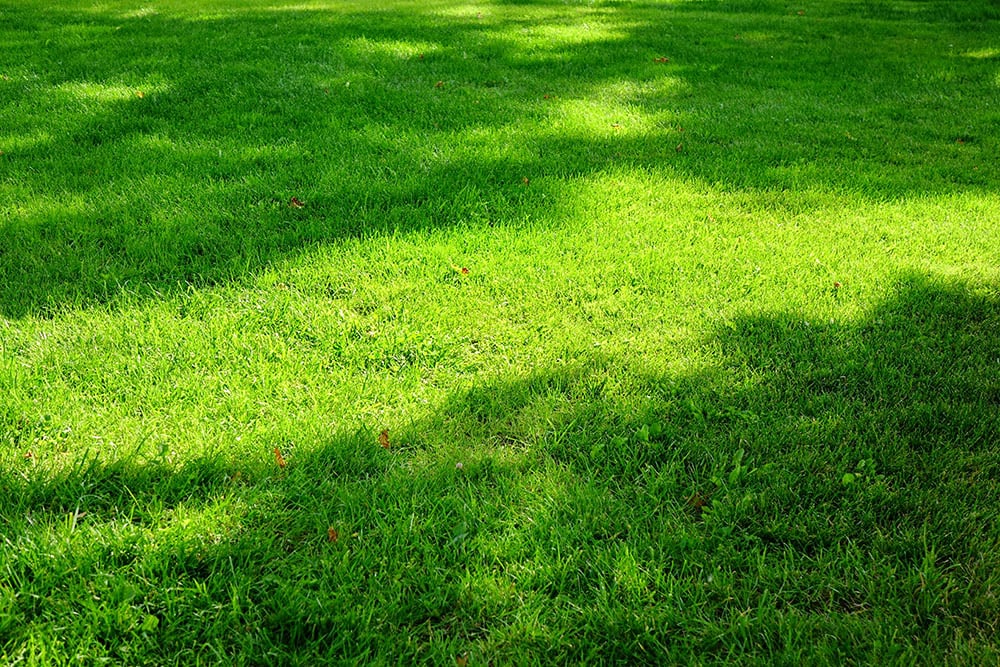
Bee Stings
As you may have gathered, clovers improve the ecosystem of a yard by attracting beneficial insects like butterflies and bees. Their blossoms are rich in nectar; a single cluster of clovers can attract thousands of bees into your yard.
Despite the obvious benefits that pollinators add to an environment, a lawn with clovers can be dangerous. If your children enjoy running barefoot in the yard or anyone in your family is allergic to bee stings, it’s best to avoid this aromatic plant.
Green Stains
While the common traditional turf grass is notorious for leaving grass stains on clothing, clovers are much worse. Once clovers stain your clothes, removing the stains can be a huge challenge. This may not be an impactful drawback, but no one wants to spend the better part of their day cleaning out clover stains from their kid’s favorite jeans or shorts.

Types of Clovers You Can Plant on Your Lawn
Even though most people prefer to plant a single clover species in their lawns, experts recommend that you mix traditional grass with clovers. You can even mix different clover species to get a lush and even lawn.
White clover (Trifolium repens)
This is the most common clover species in the US; it grows low, thrives in poor soil, and spreads rapidly so much that it chokes out weeds. It blooms to produce beautiful flowers that attract beneficial pollinators in a yard.
White clovers grow between 4 to 8 inches tall. You can pair white clover species¹ in your garden with Bermuda grass, Annual ryegrass, red clover, hard fescue, and Kentucky bluegrass.
Red clover (Trifolium pratense)
This clover species is beloved among gardeners for its elegant stature, beautiful purplish-red flowers, and natural medicinal benefits¹. It also grows tall and can reach heights that range between 6 to 24 inches. It pairs well with white clover, perennial ryegrass, Bermuda grass, and sweet clovers.
Micro clover (Trifolium repens var. ‘Pirouette’ and ‘Pipolina’)
The micro clover is a new addition to the gardening world and is typically a cultivar of the white clover. It features fewer flowers and smaller leaves when compared to the white clover.
Furthermore, it grows closer to the ground and can reach a height of 4–6 inches tall. Unlike white clovers, micro clovers do not clump as easily, allowing them to blend well with other grasses.
 Conclusion
Conclusion
If you do not mind a varied lawn appearance in your yard, adding clovers to your lawn is an excellent idea. Clover lawns are visually appealing and offer many useful benefits to your yard. Not only do they attract beneficial pollinators, but they are also great at weed suppression, and soil nitrogen fixation. Furthermore, they can improve the quality of your lawn and can be used as living mulch.
Understanding the benefits and drawbacks of clover lawns is crucial. Therefore, you should consider your gardening requirements and needs, and then compare them with the pros and cons of planting clovers in a lawn before deciding whether to add them to your yard.
Featured Image Credit: wagrati_photo, Pixabay
Contents


